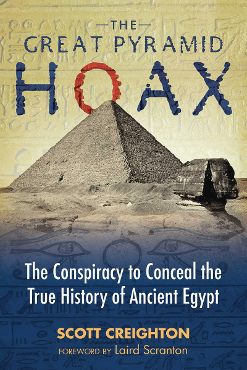Description
By Scott Creighton. Foreword by Laird Scranton. The origins of the Great Pyramid of Giza are shrouded in mystery.
Believed to be the tomb of an Egyptian king, even though no remains have ever been found, its construction date of roughly 2550 B.C. is tied to only one piece of evidence: the crudely painted marks within the pyramid’s hidden chambers that refer to the 4th Dynasty’s King Khufu, discovered in 1837 by Col. Howard Vyse and his team.
Using evidence from the time of the discovery, along with high-definition photos of the actual marks, Creighton reveals how and why the marks were faked.
Analyzing Vyse’s private diary, he reveals forgery instructions to his two assistants, and what the anachronistic sign should have been.
He examines recent chemical analysis of the marks along with the eyewitness testimony of Humphries Brewer, who worked with Vyse at Giza in 1837. Creighton’s study strikes down one of the most fundamental assertions of orthodox Egyptologists and reopens longstanding questions about the Great Pyramid’s true age, who really built it and why.
Softcover, 224 pages, 75 B&W illustrations, #787.


